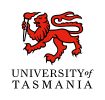TPAC recently launched 4 compute nodes with the new Intel Phi Processor, code name ‘Knights Landing’ (KNL). This gives local researchers the ability to use 256 cores of the new architecture. Intel Xeon Phi KNL processors feature the second generation of Intel’s Many Integrated Core (MIC) architecture. Each processor features integrated on-package memory for higher memory …
Category: Projects
Jan 18
TPAC makes research easier with desktop in the cloud.
Researchers are often time-poor, and TPAC understands how important it is to offer services to researchers that are familiar, have been pre-configured with research tools and are quick to deploy. With this is mind TPAC have created a number of cloud based Virtual Machines (VM’s) that run within the National Research Cloud (NeCTAR). By using the …
Sep 09
The Marine Virtual Laboratory (MARVL).
One of the many services that TPAC offers to research community is MARVL, The Marine Virtual Laboratory. The following is a brief Introduction to MARVL, how it can be accessed, and what you can do with it. You can also find out more about MARVL at www.marvl.org.au
Apr 28
TPAC hosts Climate Futures for the Alps
The Climate Futures Project, supported by the NERP Landscapes and Policy hub (http://www.nerplandscapes.edu.au/), has developed fine-scale regional climate projections for the Australian Alps (Climate Futures for the Alps, or CFA). These unique regional climate projections will help researchers and land managers with the conservation of biodiversity. The projections have been generated on TPAC’s high performance computing …
Mar 28
TPAC Supports Weather@Home Project
Any Australian with a home computer and an internet connection can now power up a climate model and help scientists find the causes of record high temperatures and drought that hit Australia and New Zealand in 2013. The online climate experiment, Weather@Home has been created by a group of scientists from the University of Melbourne, …
Jan 29
A MARVLIS Edge!
A video explaining the Marine Virtual Laboratory Information System (MARVLIS), and how it brings together a variety of data into one simple informative web portal. Need more information about MARVLIS? marvlis.blogspot.com.au Would you like to use MARVLIS? marvlis.aodn.org.au/marvlis/
Sep 11
Research cloud and virtual laboratories – welcome to the future!
The University of Tasmania is set to play a significant role in the next-stage development of Australia’s digital research infrastructure. UTAS has been awarded two projects worth more than $2 million to establish new computing and modelling facilities that will revolutionise the capability of scientists to undertake computational studies. Through a $47 million Federal Government …
Jul 04
UTAS to help underpin national storage cloud
The University of Tasmania is to play a significant role in the development of Australia’s 100-petabyte storage cloud. A $50 million Federal Government project, part of the Super Science initiatives announced in the May Budget, the Research Data Storage Infrastructure (RDSI) project is intended to transform the way in which research data collections are stored …





You must be logged in to post a comment.